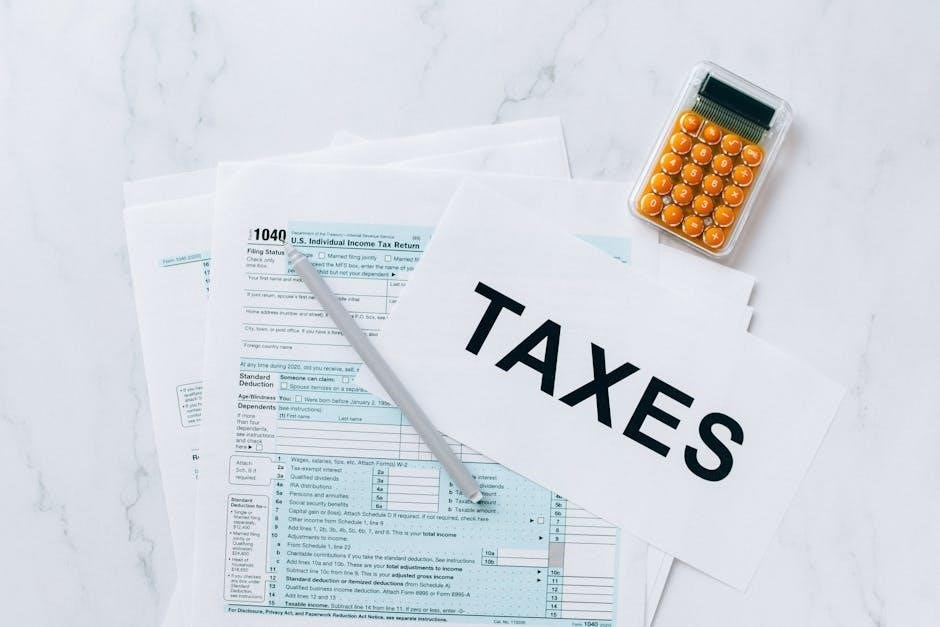The Year 6 Reasoning Questions with Answers PDF is a comprehensive resource designed to help students refine their problem-solving and critical thinking skills. It includes a variety of verbal, non-verbal, and numerical reasoning exercises, along with detailed solutions to guide learning. This document is ideal for preparing students for standardized tests and assessments, ensuring they develop the confidence and strategies needed for success. Regular practice with these questions helps improve logical reasoning, pattern recognition, and analytical abilities, which are essential for future academic challenges.
Overview of Year 6 Reasoning Skills
Year 6 reasoning skills are essential for developing critical thinking and problem-solving abilities in students. These skills encompass verbal, non-verbal, and numerical reasoning, enabling students to analyze patterns, solve complex problems, and think logically. Verbal reasoning involves understanding word sequences, analogies, and language-based puzzles, while non-verbal reasoning focuses on shape sequences, grid completions, and spatial awareness. Numerical reasoning tests mathematical problem-solving skills through arithmetic operations and word problems. Regular practice helps students identify patterns, improve accuracy, and build confidence. These skills are foundational for future academic success, as they enhance analytical thinking and prepare students for higher-level challenges in education and beyond.
Importance of Practicing Reasoning Questions
Practicing reasoning questions is crucial for Year 6 students to build confidence and proficiency in problem-solving. Regular practice helps students identify and master question patterns, reducing exam anxiety. Reasoning skills are transferable to various subjects and real-life situations, fostering independent thinking. It improves logical reasoning, pattern recognition, and analytical abilities, which are key for academic success. By working through exercises, students can pinpoint strengths and weaknesses, allowing targeted improvement. Timely feedback from answers ensures understanding and growth. Consistent practice also enhances time management and accuracy, preparing students for standardized tests and future challenges. Ultimately, it lays a strong foundation for higher-level thinking and lifelong learning.
Structure of the Year 6 Reasoning Questions PDF
The Year 6 Reasoning Questions PDF is structured to provide a clear and organized approach to learning. It begins with an introduction to reasoning skills, followed by sections dedicated to verbal, non-verbal, and numerical reasoning. Each section contains a variety of practice questions, ranging from simple to complex, ensuring progressive difficulty. The PDF includes detailed answers and explanations, allowing students to review and understand their mistakes. Additional resources, such as weekly practice tests and worksheets, are included to reinforce learning. The document is designed to cater to different learning styles, with visual, textual, and numerical exercises. Its clear layout and comprehensive coverage make it an essential tool for effective preparation and skill development.

Types of Year 6 Reasoning Questions
Year 6 reasoning questions are categorized into three main types: Verbal Reasoning, which tests word-based problem-solving; Non-Verbal Reasoning, focusing on shape patterns and logic; and Numerical Reasoning, involving mathematical operations and data interpretation. These categories help students develop diverse cognitive skills essential for academic success.
Verbal Reasoning Questions
Verbal reasoning questions assess a student’s ability to solve word-based problems and think critically. These exercises often involve identifying word patterns, analogies, and logical sequences. Examples include completing word chains, deciphering word meanings, and solving anagrams. Verbal reasoning tests a student’s vocabulary, comprehension, and ability to manipulate language. They also require logical thinking to identify relationships between words or phrases. Regular practice with these questions helps improve linguistic skills and problem-solving strategies. Resources like Year 6 Reasoning Questions with Answers PDF provide numerous exercises to refine these abilities, ensuring students are well-prepared for assessments. These questions are essential for building confidence in tackling complex word problems effectively.
Non-Verbal Reasoning Questions
Non-verbal reasoning questions focus on solving problems using visual or spatial information rather than language. These exercises often involve identifying patterns, completing shapes, and solving puzzles. Common examples include shape sequences, grid completions, and symmetry tasks. Non-verbal reasoning tests a student’s ability to think logically and recognize relationships between objects. It also enhances spatial awareness and the ability to visualize solutions. Resources like Year 6 Reasoning Questions with Answers PDF provide numerous non-verbal exercises, such as identifying missing shapes in sequences or determining the next pattern in a series. Regular practice with these questions helps develop problem-solving skills and improves logical reasoning. These exercises are essential for building confidence in tackling spatial and visual challenges effectively.
Numerical Reasoning Questions
Numerical reasoning questions assess a student’s ability to interpret, analyze, and solve mathematical problems. These exercises often involve arithmetic operations, word problems, and logical reasoning with numbers. They may include identifying patterns in number sequences, solving calculations, and understanding numerical relationships. Resources like Year 6 Reasoning Questions with Answers PDF provide a range of numerical exercises, such as fraction, decimal, and percentage problems. These questions help students develop their mathematical fluency and problem-solving techniques. Regular practice with numerical reasoning tasks enhances computational skills and prepares students for more complex mathematical challenges. By mastering these exercises, students can improve their ability to approach and solve numerical problems confidently and efficiently.

Key Topics Covered in Year 6 Reasoning Questions
The Year 6 Reasoning Questions PDF covers essential topics like word sequences, shape patterns, logical reasoning, and mathematical operations. These exercises enhance problem-solving skills and prepare students for standardized tests, fostering critical thinking and analytical abilities. Regular practice helps students master these key areas, ensuring they are well-equipped for future academic challenges.
Word Sequences and Patterns
Word sequences and patterns are fundamental in Year 6 reasoning questions, testing students’ ability to identify and predict logical order. These exercises involve analyzing alphabetical sequences, such as identifying the next or missing word in a series. For example, questions might ask students to complete a pattern like “Cat, Dog, Elephant, Flamingo, ?” or recognize alphabetical shifts. Additionally, pattern-based questions may involve synonyms, antonyms, or word relationships. These tasks enhance linguistic reasoning and logical thinking, preparing students for more complex verbal reasoning challenges. Regular practice with these questions helps build confidence and improves the ability to recognize and extend sequences effectively.
Shape Sequences and Grid Completions
Shape sequences and grid completions are key components of Year 6 reasoning questions, focusing on visual and spatial reasoning skills. These exercises require students to identify patterns in sequences of shapes or complete incomplete grids by recognizing logical relationships. For example, students might be asked to determine the next shape in a series or fill in missing elements in a grid based on symmetry or rotation. These tasks enhance problem-solving abilities and logical thinking, preparing students for more complex non-verbal reasoning challenges. Regular practice with these questions helps students develop their spatial awareness and ability to recognize patterns, which are essential for success in standardized tests and future academic tasks.
Logical Reasoning and Problem Solving
Logical reasoning and problem-solving questions in Year 6 resources are designed to test students’ ability to analyze information, identify patterns, and draw conclusions. These exercises often involve identifying true statements, solving logic puzzles, or deducing missing information based on given clues. For example, students might be asked to determine the next number in a sequence or decode a pattern using symbols or words. These tasks enhance critical thinking and analytical skills, preparing students for more complex challenges. Regular practice with these questions helps students develop confidence in approaching unfamiliar problems and improves their ability to think systematically. The inclusion of answers allows for self-assessment and targeted improvement in weak areas.
Mathematical Operations and Word Problems
Mathematical operations and word problems in Year 6 reasoning resources focus on applying arithmetic skills in practical and analytical contexts. Students are challenged to perform calculations involving fractions, decimals, and percentages, often presented in word-based scenarios. These questions require understanding numerical relationships and translating them into mathematical expressions. For example, problems might involve calculating costs, mixing ingredients, or comparing quantities. The exercises also include multi-step word problems that test the ability to break down information and apply appropriate operations. Regular practice with these questions enhances computational accuracy and the ability to interpret real-world data. The PDF provides detailed answers, enabling students to review their work and improve their problem-solving strategies effectively.

Resources and Practice Materials
Access free Year 6 reasoning questions PDF downloads, past SATs papers, and weekly practice tests with answers. Utilize quizzes, worksheets, and test sheets to refine skills effectively.
Free Year 6 Reasoning Questions PDF Downloads
Free Year 6 reasoning questions PDF downloads are widely available online, offering a variety of exercises to suit different learning needs. These resources include verbal, non-verbal, and numerical reasoning questions, along with detailed answers to support self-assessment. Many PDFs are designed to mimic actual test formats, helping students familiarize themselves with question styles and time management. They cover topics like word sequences, shape patterns, and mathematical problem-solving. Regular practice with these materials enhances critical thinking and logical reasoning skills. Parents and teachers can download these PDFs to create personalized study plans, ensuring students are well-prepared for standardized tests and school assessments. Consistent use of these resources fosters confidence and improves problem-solving abilities.
Past SATs Papers and Marking Schemes
Past SATs papers and marking schemes are invaluable resources for Year 6 students preparing for their exams. These documents provide authentic test questions and detailed answers, allowing students to practice under exam conditions. They cover a wide range of reasoning topics, including verbal, non-verbal, and numerical reasoning, ensuring comprehensive preparation. The marking schemes offer clear explanations for correct answers, helping students understand their mistakes and improve. By reviewing past papers, students can identify patterns and common question types, boosting their confidence and problem-solving skills. Many of these resources are available as free downloads, making them accessible for all students to practice and excel in their exams. Regular use of past papers is highly recommended for effective test preparation.
Weekly Reasoning Practice Tests and Worksheets
Weekly reasoning practice tests and worksheets are excellent tools for consistent skill development in Year 6 students. These resources provide structured exercises tailored to improve problem-solving abilities, logical thinking, and time management. Each test typically includes a mix of verbal, non-verbal, and numerical reasoning questions, mirroring the format of actual exams. Worksheets often focus on specific topics, such as word sequences or shape patterns, allowing students to target weaker areas. Regular practice helps students identify their strengths and gaps, enabling focused improvement. Many resources are available in PDF format, making them easy to download and use. By incorporating these weekly tests into study routines, students can build confidence and readiness for their exams, ensuring steady progress in their reasoning skills. These materials are also adaptable for use in classrooms or at home.
Year 6 Reasoning Quizzes and Test Sheets
Year 6 reasoning quizzes and test sheets are valuable resources for students preparing for exams. These materials are designed to assess and enhance problem-solving, logical thinking, and analytical skills. Available in PDF format, they cover a range of topics, including verbal, non-verbal, and numerical reasoning. Quizzes often feature timed exercises to improve speed and accuracy, while test sheets provide detailed questions with answer keys for self-assessment. Regular use of these resources helps students identify areas for improvement and builds confidence. Many quizzes and test sheets are tailored to match exam formats, ensuring students are well-prepared for standardized tests. They are ideal for both classroom and home use, offering a flexible way to reinforce learning and achieve academic success.

Study Tips for Year 6 Reasoning Questions
Regular practice with past papers and quizzes improves problem-solving skills. Understanding question patterns, managing time effectively, and reviewing mistakes are key strategies for success.
Understanding Question Patterns
Identifying recurring question types in Year 6 reasoning tests is crucial for effective preparation. Many questions follow predictable patterns, such as shape sequences, word problems, and logical deductions. By analyzing past papers, students can recognize these patterns and develop tailored strategies. For example, numerical reasoning often involves arithmetic operations embedded in word contexts, while non-verbal questions frequently test symmetry and spatial awareness. Verbal reasoning may focus on word meanings and analogies. Familiarizing oneself with these patterns enables students to approach each question with confidence, knowing what techniques to apply. Regular practice with diverse question types reinforces this understanding, making it easier to tackle new problems during exams.
Developing Problem-Solving Techniques
Mastering problem-solving techniques is essential for excelling in Year 6 reasoning questions. Students should focus on breaking down complex problems into manageable steps, identifying key information, and applying logical reasoning. Practicing with past papers and sample questions helps develop familiarity with common question structures and recurring themes. For example, numerical reasoning questions often involve multi-step calculations, while verbal and non-verbal questions require pattern recognition and logical deductions. Encouraging students to analyze their mistakes and understand the reasoning behind correct answers fosters a deeper understanding of problem-solving strategies. Regular practice and systematic analysis of question types enable students to approach challenges with confidence and precision, ensuring they are well-prepared for assessments.
Time Management Strategies
Effective time management is crucial when tackling Year 6 reasoning questions. Students should allocate specific time slots for each question type during practice, simulating exam conditions. Prioritize complex problems first to ensure ample time for detailed thinking. Utilize past papers to familiarize yourself with question formats and timing. Incorporate regular, short practice sessions to build consistency and speed. Reviewing mistakes helps identify areas needing improvement, refining decision-making under pressure. Consistent practice with timed exercises enhances efficiency and accuracy, ensuring students can complete tests confidently within allotted timeframes. Mastering time management boosts performance and reduces exam anxiety, equipping students with essential skills for success.

Answering Year 6 Reasoning Questions Effectively
To answer Year 6 reasoning questions effectively, students should carefully read each question, identify the key requirements, and use elimination techniques to narrow down options. Practicing with past papers and reviewing answers helps build confidence and accuracy, ensuring a systematic approach to problem-solving.
How to Approach Verbal Reasoning Tasks
Mastering verbal reasoning tasks requires a systematic approach. Start by carefully reading the question to understand what is being asked. Identify key words and phrases that indicate the type of reasoning required, such as patterns, analogies, or logical deductions. Break down complex sentences into simpler parts and look for relationships between words or concepts. Practice recognizing common question formats, such as completing sequences or identifying opposites. Use elimination techniques to rule out incorrect answers and increase your chances of selecting the right one. Regularly reviewing past papers and their answers will help you familiarize yourself with question patterns and improve your problem-solving speed. Avoid rushing and ensure you allocate time to review your answers before submitting.
Mastering Non-Verbal Reasoning Techniques
Non-verbal reasoning tasks focus on visual and spatial problem-solving skills, often involving shape sequences, grid completions, and symmetry. To master these, start by identifying patterns or relationships between shapes or objects. Practice recognizing repetition, progression, or transformation in sequences. For grid-based questions, analyze rows and columns to determine missing elements. Symmetry tasks require understanding reflections or rotations. Spatial awareness exercises, such as mental rotations, also test visual processing abilities. Regular practice with past papers and dedicated non-verbal reasoning sheets can enhance your skills. Focus on improving speed and accuracy by familiarizing yourself with common question types. Always review your answers to understand errors and refine your strategies for future tests.
Solving Numerical Reasoning Problems Step-by-Step
Numerical reasoning problems test mathematical skills and logical thinking. Start by carefully reading the question to understand what is being asked. Identify the key numbers, operations, or relationships involved. For word problems, break them down into smaller, manageable parts and translate words into mathematical expressions. Use past papers and practice sheets to familiarize yourself with common question types, such as sequences, patterns, and multi-step calculations. Always check your work to ensure accuracy, especially under timed conditions. Regular practice with Year 6 Reasoning Questions with Answers PDF helps build confidence and speed in solving numerical problems effectively.

Common Mistakes to Avoid
Common mistakes include misinterpreting question requirements, rushing through complex problems, and not reviewing answers. These errors can lead to unnecessary lost marks and reduced confidence.
Misinterpreting Question Requirements
Misinterpreting question requirements is a common mistake that can lead to incorrect answers. Students often overlook specific instructions or misunderstand the task at hand. For example, in verbal reasoning, misreading a question about word sequences or logical relationships can result in errors. Similarly, in non-verbal reasoning, misinterpreting shape patterns or grid completions can confuse students. To avoid this, it is crucial to read questions slowly and carefully. Encourage students to underline key words and ensure they understand what is being asked before attempting to answer. Practicing with past papers helps identify such patterns and improves accuracy. Regular review of mistakes also builds awareness and reduces misinterpretation over time.
Rushing Through Complex Problems
Rushing through complex problems is a common pitfall for students, especially under time pressure. This often leads to careless mistakes and missed steps in reasoning tasks. Verbal and non-verbal questions require careful analysis, and skipping this step can result in incorrect answers. Encourage students to allocate sufficient time to each question, ensuring they fully understand the task before attempting to solve it. Time management strategies, such as prioritizing simpler questions first, can help prevent rushing. Regular practice with Year 6 Reasoning Questions with Answers PDF builds confidence and reduces the urge to hurry. Emphasize the importance of accuracy over speed to foster better problem-solving habits and improved results.
Not Reviewing Answers
Not reviewing answers is a common mistake that can significantly impact performance in Year 6 reasoning tests. Many students complete their questions but fail to check their work, leading to avoidable errors. Reviewing answers ensures that mistakes, such as misreading questions or miscalculations, are identified and corrected. It also helps students verify their reasoning and confirm that their answers make sense. Regularly reviewing answers during practice with Year 6 Reasoning Questions with Answers PDF fosters a habit of accuracy and attention to detail. This practice is particularly important for complex problems, where a single misstep can lead to an incorrect solution. Encourage students to allocate time to review their work to maximize their scores and understanding. This simple step can make a substantial difference in their performance and confidence.

Preparing for Year 6 Reasoning Tests
Creating a structured study schedule and practicing with past papers helps students familiarize themselves with test formats and question types, ensuring they are well-prepared for the actual test.
Creating a Study Schedule
Creating a study schedule is essential for effective preparation. Allocate specific times daily for verbal, non-verbal, and numerical reasoning practice. Start with easier questions, progressing to harder ones. Use past papers and PDFs with answers for structured practice. Dedicate time to review mistakes and understand corrections. Incorporate timed sessions to simulate exam conditions. Ensure breaks are included to avoid burnout. Consistency is key; set aside a few days weekly for dedicated study. Seek feedback from teachers or parents to identify improvement areas. A balanced schedule covering all question types, with time for review and test simulations, builds confidence and readiness for the actual tests.
Using Past Papers for Practice
Using past papers is an effective way to familiarize students with the format and content of Year 6 reasoning tests. These resources provide real exam questions, allowing students to practice under timed conditions. Past papers help identify strengths and weaknesses, enabling targeted study. They also reveal common question patterns, aiding in better preparation. Marking schemes included in past papers enable students to review their answers, understand mistakes, and improve. Regular practice with past papers builds confidence and reduces anxiety. Parents and teachers can use these papers to create mock tests, simulating exam conditions. Regularly working through past papers is a proven method to enhance problem-solving skills and ensure readiness for the actual test.
Seeking Feedback and Improvement
Seeking feedback is crucial for improving performance in Year 6 reasoning tests. By reviewing answers and understanding mistakes, students can identify areas needing attention. Parents and teachers play a key role in providing constructive feedback, helping students refine their problem-solving techniques. Regularly discussing errors with educators enables students to grasp concepts more effectively. Encouraging self-assessment also fosters a growth mindset, allowing students to take ownership of their learning. Feedback loops ensure continuous improvement, building confidence and competence over time. This approach, combined with consistent practice, equips students with the skills needed to excel in their reasoning assessments and beyond.

Importance of Reasoning Skills for Future Education

Developing strong reasoning skills in Year 6 builds a foundation for higher-level thinking, enhances problem-solving abilities, and prepares students for standardized tests and future academic challenges.
Building Foundation for Higher-Level Thinking
Mastering reasoning skills in Year 6 lays a strong groundwork for higher-level thinking, enabling students to approach complex problems with confidence. These exercises enhance cognitive abilities, fostering creativity and analytical thinking. By practicing verbal, non-verbal, and numerical reasoning, students develop a robust foundation for tackling advanced concepts in mathematics and language arts. This skill set is crucial for transitioning to secondary education, where problem-solving and critical thinking are essential. Regular practice with resources like Year 6 Reasoning Questions with Answers PDF ensures students are well-prepared to embrace future academic challenges and think independently. These skills are not only academic tools but lifelong assets for intellectual growth.
Enhancing Problem-Solving Abilities
Engaging with Year 6 reasoning questions helps students develop strong problem-solving skills, essential for tackling complex challenges in education and beyond. These exercises encourage critical thinking, logical reasoning, and the ability to approach problems from multiple angles. By practicing verbal, non-verbal, and numerical reasoning tasks, students learn to analyze information, identify patterns, and draw accurate conclusions. Regular practice builds confidence and improves their ability to think methodically. These skills are transferable to various subjects and real-life scenarios, preparing students for future academic demands and standardized tests. The structured format of these questions and answers provides a clear framework for understanding and mastering problem-solving strategies.
Preparing for Standardized Tests
The Year 6 Reasoning Questions with Answers PDF is an excellent tool for preparing students for standardized tests. It offers a variety of practice questions that closely resemble actual exam formats, familiarizing students with test structures and content. Covering verbal, non-verbal, and numerical reasoning, it ensures well-rounded preparation. Regular practice enhances time management, reduces exam anxiety, and boosts confidence. The provided answers allow students to assess their performance and target weak areas. This resource is invaluable for helping students develop the skills and strategies necessary to succeed in standardized tests and beyond.













































